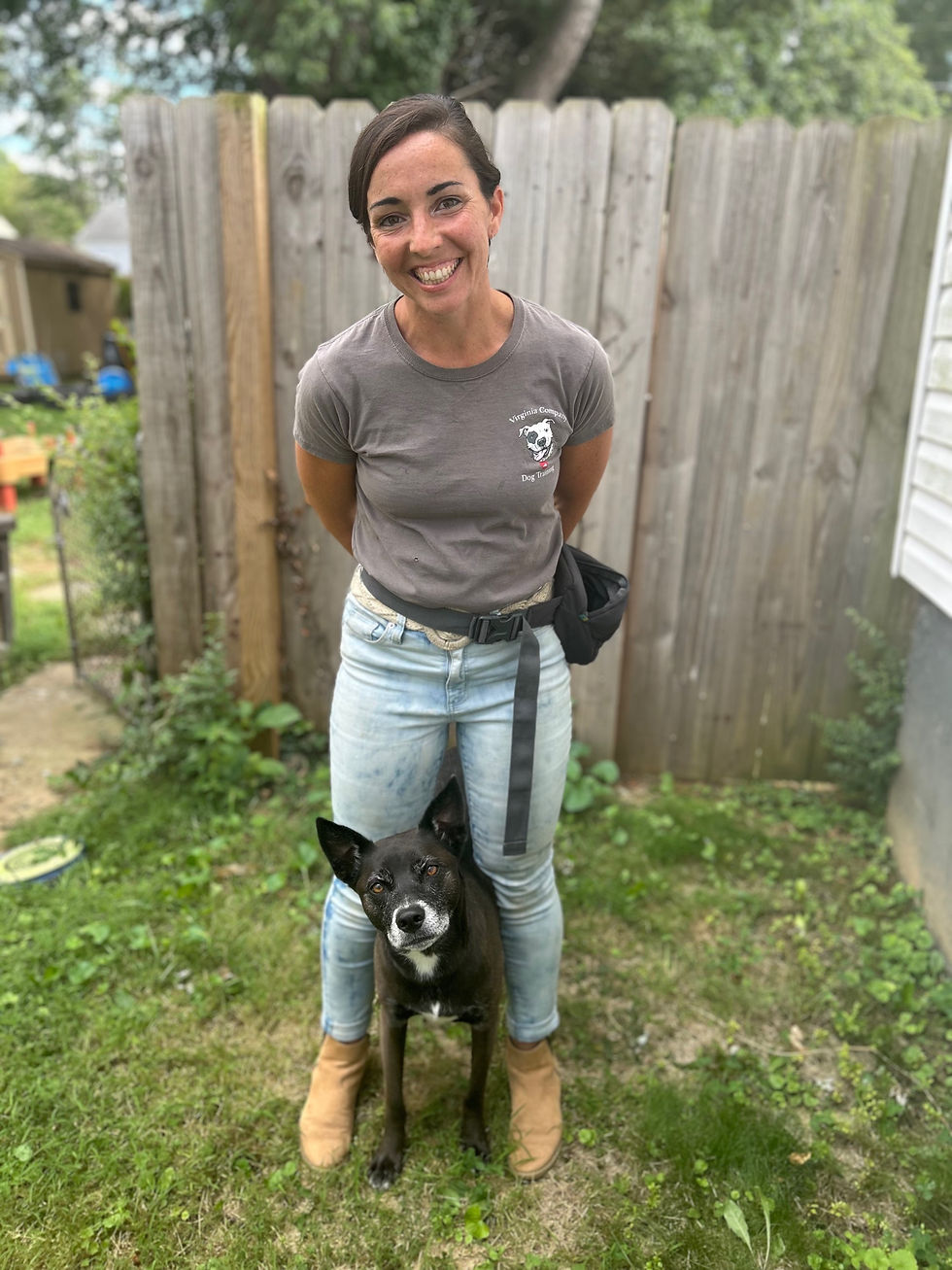The Itty Bitty Secrets of Loose Leash Walking With Your Dog!
- Melissa Kenngott
- Dec 15, 2022
- 2 min read
Nothing tops a nice, long walk with you and your dog, immersed in Mother Nature together, right? Studies show that movement with your dog activates the parasympathetic nervous system -- this is part of the nervous system that helps you calm down and relax (Effect of dog‐walking on autonomic nervous activity in senior citizens - Motooka - 2006 - Medical Journal of Australia - Wiley Online Library).
But, what if the walk with your dog is stressful because they are actually walking you?
Here's some tips to help jump start an enjoyable walk for you and your dog --
Teach your dog what leash pressure means. Until this point, your dog has learned that pulling equals access to the environment. Now, we need to teach them that pressure means to stop and orient to you. Check out this video by one of my favorite dog training guru's!
2. Practice loose leash walking exercises in your backyard. Because dogs learn consequential patterns very quickly, it takes time and patience to replace old behaviors with new ones. Now, get your dog leashed up and start practicing your newly acquired loose leash walking techniques in your yard.
3. Progress to more challenging environments once you and your dog have mastered the basics of leash pressure. Use landmarks in the environment to work on pattern walking (for instance, we will pattern walk to that tree) -- see the video below -- and start rotating between pattern walking and your dog's favorite part of walking -- sniffing. Check out this video by one of my other favorite dog trainers, Leslie McDevitt. For additional information, consider purchasing her book, Control Unleashed: Creating a Focused and Confident Dog: Leslie McDevitt: 9781892694171: Amazon.com: Books.
4. Invest in a well fitted harness or collar so your dog can feel the pressure you apply from the leash. Consider using a 6, or 8, foot lead so you can allow your dog to sniff in between training sessions. This equipment comes from a local company in North Carolina that offers a lifetime warranty on their products.
5. Make sure the reinforcement you're using works well for your dog as a positive motivator. If your dog is "picky" about treats, continue experimenting until you get the wild-eyed look from your pup that means, yes! I want to work for that!Check out my favorite dog treats below, approved by all of my client's dogs, for the closest supplier.
6. Have fun! If you're not having fun, consider lowering your expectations and throw in a tug session or ball throw to offset the difficulty of learning something new together. Remember, this type of training should be fun, so get creative and start improving the relationship with your dog today!


Comments